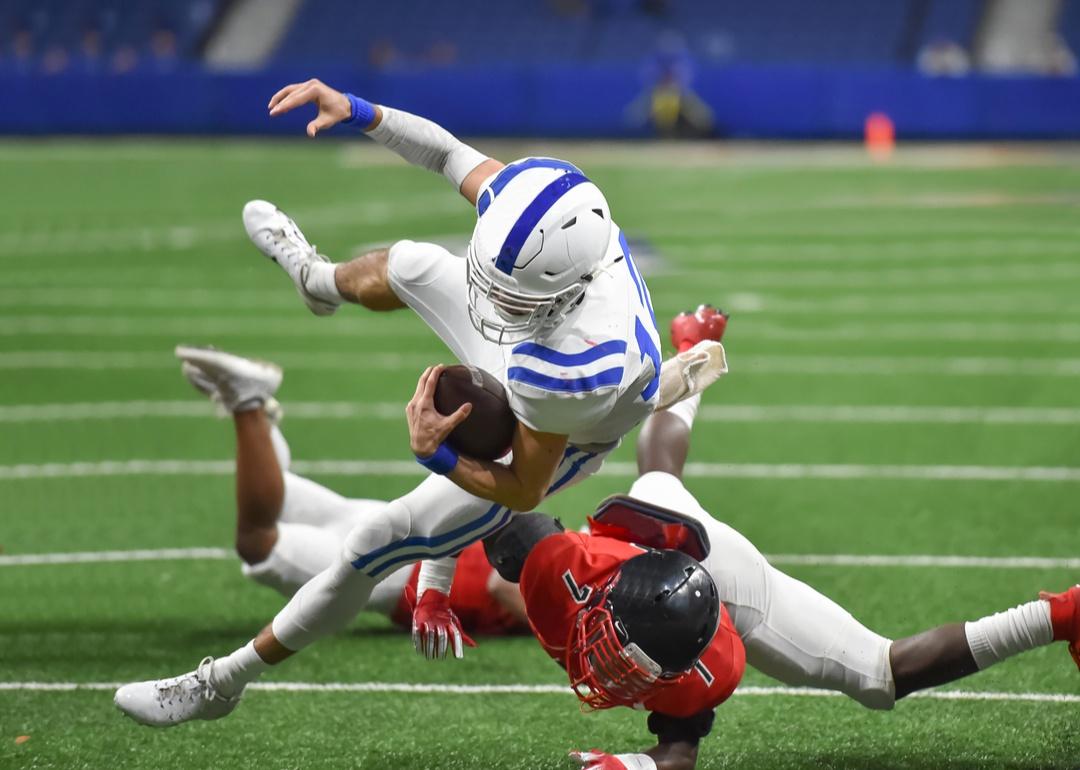
High school sports that cause the most concussions
This story originally appeared on Neural Effects and was produced and distributed in partnership with Stacker Studio.
High school sports that cause the most concussions
A concussion is a serious, traumatic brain injury. Athletes usually sustain concussions when they fall or collide with one another or an object, such as a goal post. Concussions often occur without an athlete losing consciousness.
Symptoms reported by athletes who have sustained a concussion include headache, nausea, dizziness, vomiting, and a sensitivity to light or noise. Athletes who sustain a concussion may seem dazed and forgetful. They may also experience mood swings and personality changes in the longer term.
Preteens and teens are more likely than adults to sustain a concussion and will take longer to recover. And athletes who have previously had a concussion are more likely to sustain another one. The U.S. Centers for Disease Control and Prevention came up with a four-step action plan for coaches who suspect one of their athletes has sustained a concussion.
While the total number of injuries across high school sports has decreased since 2005, the total number of concussions has increased by 87%. Concussions can happen to athletes in any sport. Some high school sports, especially football, make up a larger percentage of current concussion rates than others.
Neural Effects analyzed data from the National High School Sports-Related Injury Surveillance Study, which collects injury data on nine common high school sports, to determine the concussion rates for each. Neural Effects used data from 2018-19 to account for the cancellation of spring sports in 2020.
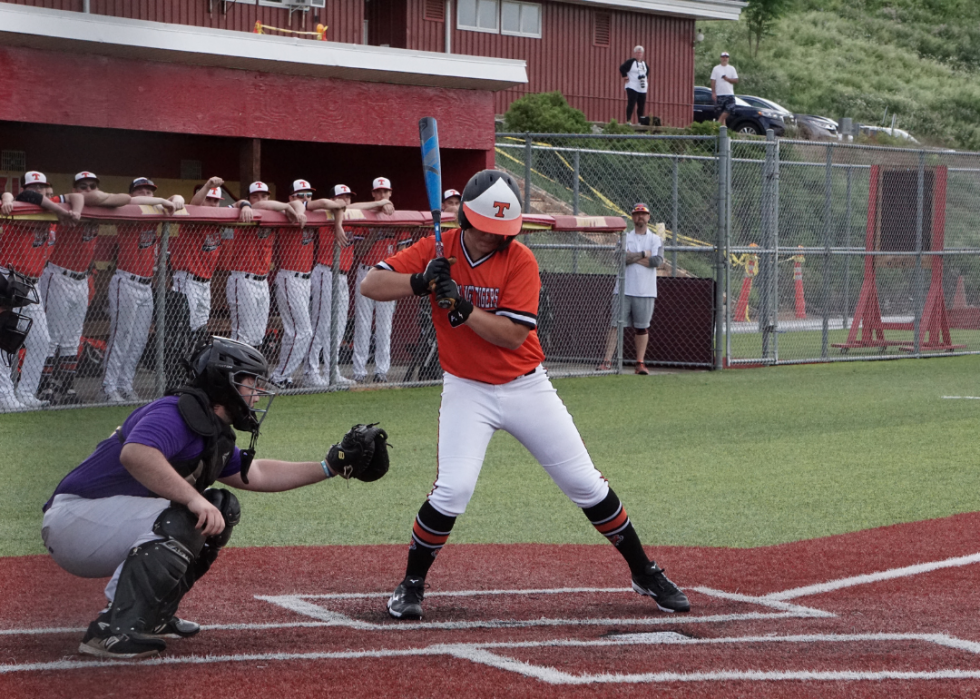
#9. Baseball
- Total concussions: 4,857 (9.2% of all baseball injuries)
--- Concussions from practice: 32.3%
--- Concussions from competition: 67.7%
- Concussions as percent of all high school sport concussions: 1.9%
About half of concussions in baseball occurred while fielding the ball. About 26% happened when a player was hit by a pitch while taking a turn at bat. Batting helmets should fit properly and be in good condition. And officials and coaches should remove any obstacles that may trip players as they round bases or field runs.
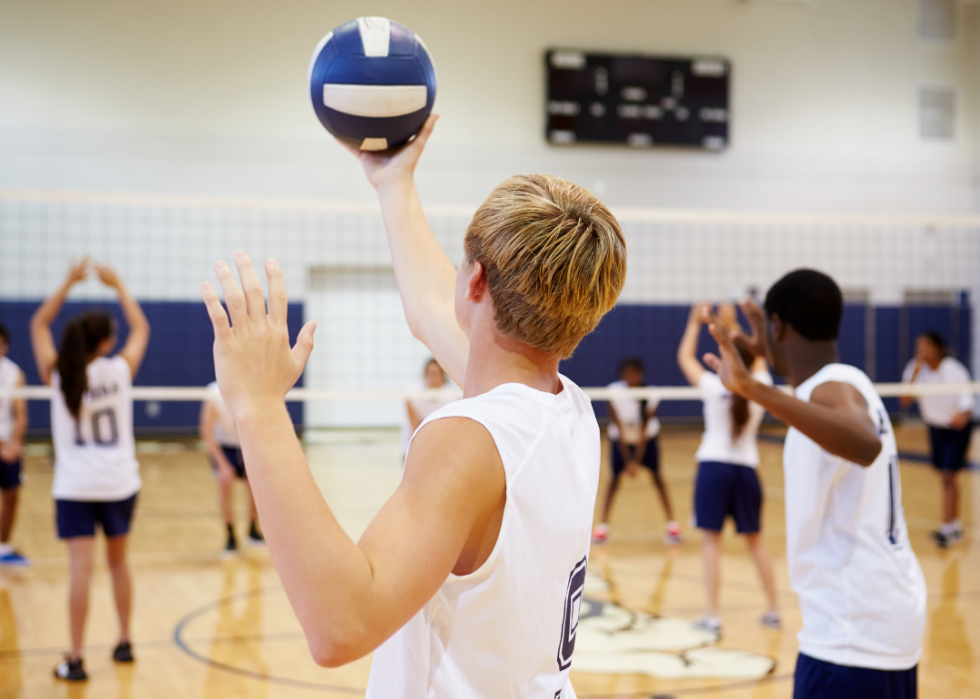
#8. Volleyball
- Total concussions: 9,063 (15.3% of all volleyball injuries)
--- Concussions from practice: 50.8%
--- Concussions from competition: 49.2%
- Concussions as percent of all high school sport concussions: 3.6%
Digging caused about 36% of concussions in volleyball, while serving caused about half as many concussions, almost 16%. And setting caused the fewest concussions, about 1%. Teaching players the proper technique for diving for the ball and digging can help prevent concussions. Coaches and staff should keep a close eye on players most likely to get concussions: the outside hitter and setter.
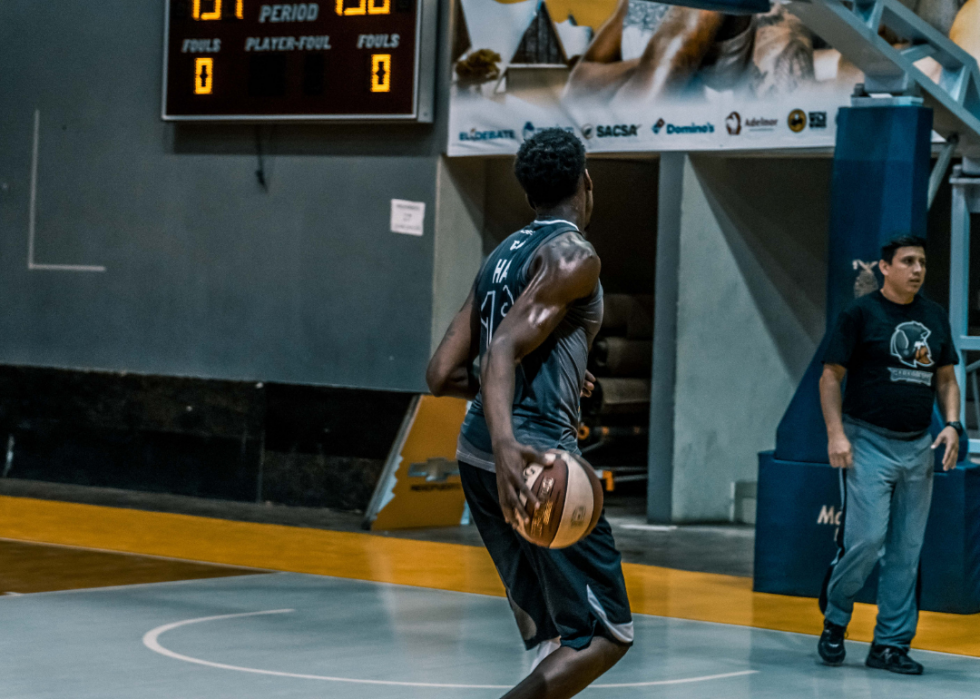
#7. Boys' basketball
- Total concussions: 9,187 (10.5% of all boys' basketball injuries)
--- Concussions from practice: 50.6%
--- Concussions from competition: 49.4%
- Concussions as percent of all high school sport concussions: 3.6%
More than a quarter of concussions in boys’ basketball occurred while a player was defending the ball. About 13% occurred while players were chasing a loose ball. Players should never hit another player in the head, or use their head to hit another player. Almost two-thirds of concussions in high school boys’ basketball were caused by collisions between players.

#6. Softball
- Total concussions: 9,406 (14.2% of all softball injuries)
--- Concussions from practice: 29.3%
--- Concussions from competition: 70.7%
- Concussions as percent of all high school sport concussions: 3.7%
Almost 18% of concussions in softball occurred while fielding a batted ball, and 14% occurred while fielding throws. But less than 10% were caused by being hit by a pitch. Like baseball players, softball players should wear properly fitting batting helmets that are in good condition. Prevention can go beyond prepping individual players: Working with coaches or event administrators to make sure any equipment provided is in solid condition can minimize the risk of concussion, too.
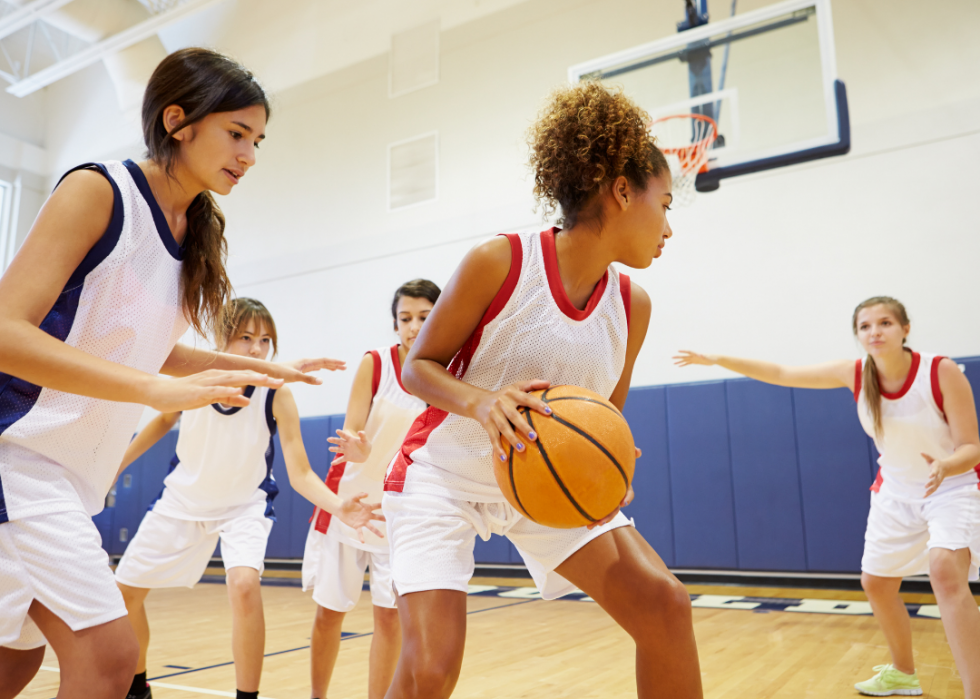
#5. Girls' basketball
- Total concussions: 17,143 (20.9% of all girls' basketball injuries)
--- Concussions from practice: 30.2%
--- Concussions from competition: 69.8%
- Concussions as percent of all high school sport concussions: 6.7%
Among high school basketball players, girls have higher rates of concussions than boys. Boys saw a total of more than 9,000 concussions while girls saw nearly double that amount, at more than 17,000 concussions. Almost 30% of concussions occured while female players were defending the ball. And a little more than half of concussions were the result of collisions between players.
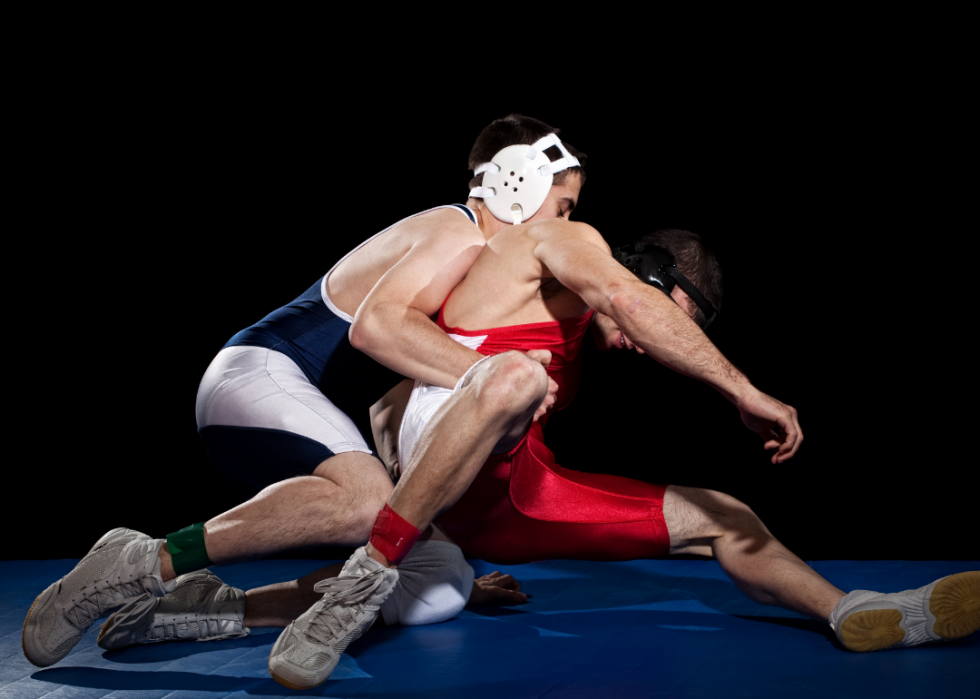
#4. Wrestling
- Total concussions: 17,739 (19.5% of all wrestling injuries)
--- Concussions from practice: 26.3%
--- Concussions from competition: 73.7%
- Concussions as percent of all high school sport concussions: 7.0%
Almost two-thirds of concussions in wrestling occurred during takedowns. Coaches should teach wrestlers proper takedown techniques and how to avoid taking blows to the head in order to prevent injury. Almost 11% of concussions happened while sparring, so proper technique is paramount. Wrestlers should not make illegal contact with their opponent or hit their opponent in the head.
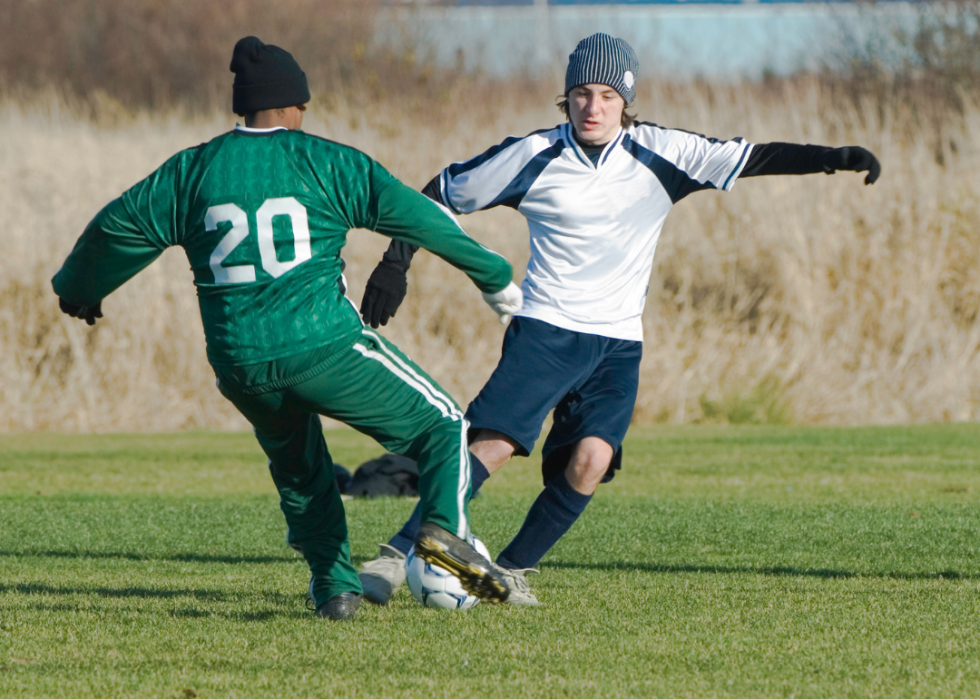
#3. Boys' soccer
- Total concussions: 31,061 (16.8% of all boys' soccer injuries)
--- Concussions from practice: 10.1%
--- Concussions from competition: 89.9%
- Concussions as percent of all high school sport concussions: 12.2%
Heading the ball, when players hit the ball with their head as opposed to their feet, caused about 27% of concussions. U.S. Soccer recommends no heading for players 10 and under, and that heading be limited to practices for players between the ages of 11 and 13. Players should never hit another player in the head or use their head to strike another player. They should also learn ways to avoid colliding with others on the field.
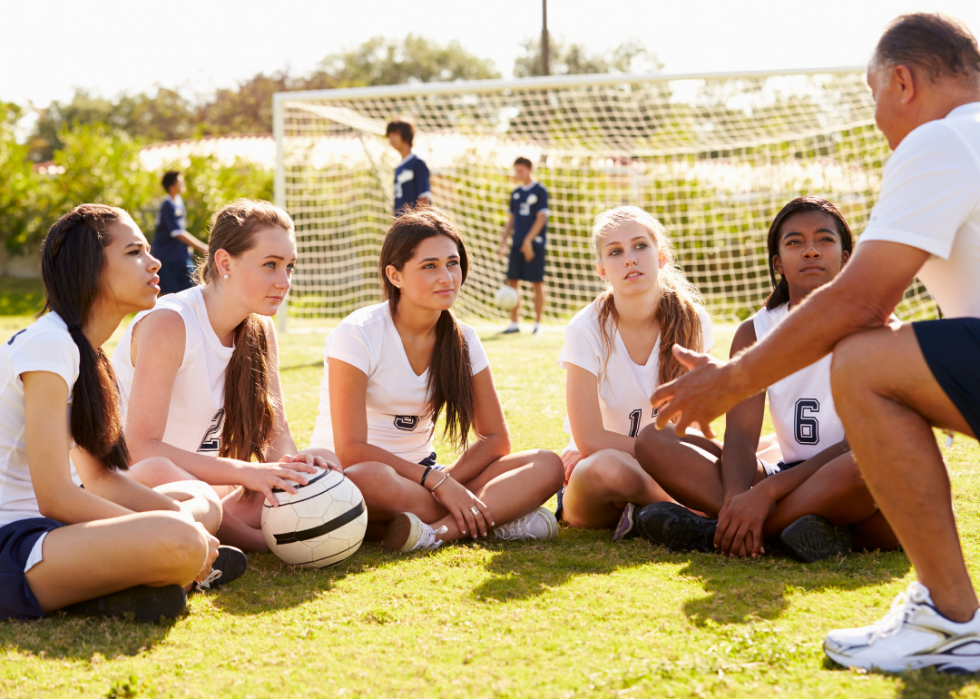
#2. Girls' soccer
- Total concussions: 48,402 (21.2% of all girls' soccer injuries)
--- Concussions from practice: 22.2%
--- Concussions from competition: 77.8%
- Concussions as percent of all high school sport concussions: 19.0%
Among high school soccer players, girls have a higher rate of concussion compared to boys. About 18% of girls’ concussions happened while they struck the ball with their head. And almost 21% of concussions in girls’ soccer occurred while players are defending the ball. Overall, girls’ soccer saw about 17,000 more concussions than boys’ soccer.
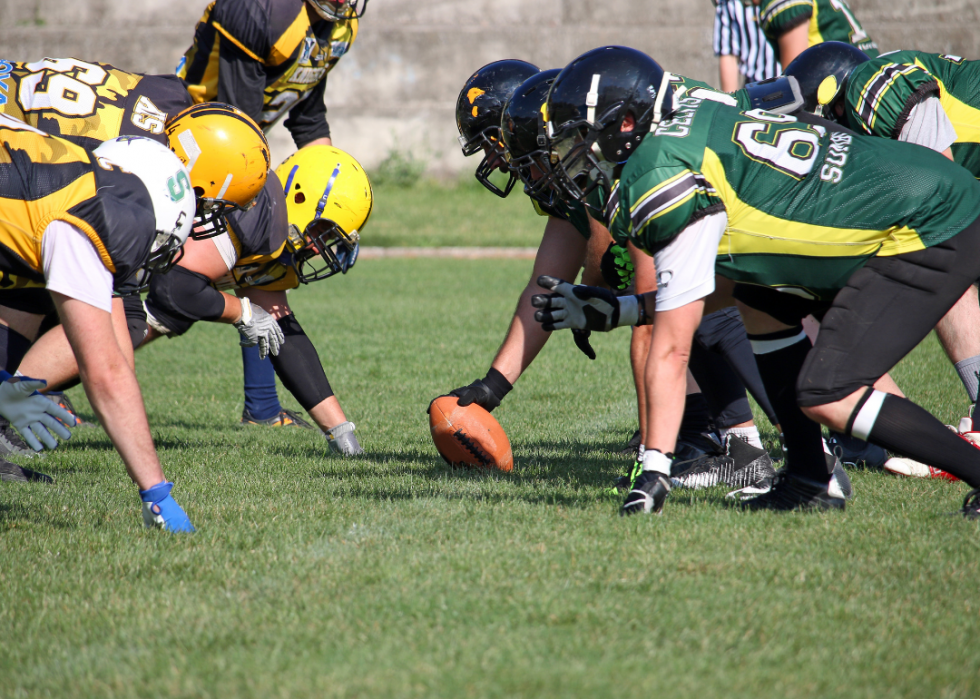
#1. Football
- Total concussions: 99,036 (21.7% of all football injuries)
--- Concussions from practice: 32.0%
--- Concussions from competition: 68.0%
- Concussions as percent of all high school sport concussions: 38.9%
Football is where most high school concussions happen by a wide margin. About half of those concussions in high school football occur during running plays. About 31% occur when a player is being tackled by another player, and 23% happen to a player as he tackles an opponent. Linebackers sustained almost 60% of concussions among defensive players and running backs sustained 46% among offensive players. Coaches and assistants should limit the number of contact drills or scrimmages during practices to keep injuries down.
This story originally appeared on Neural Effects and was produced and distributed in partnership with Stacker Studio.



